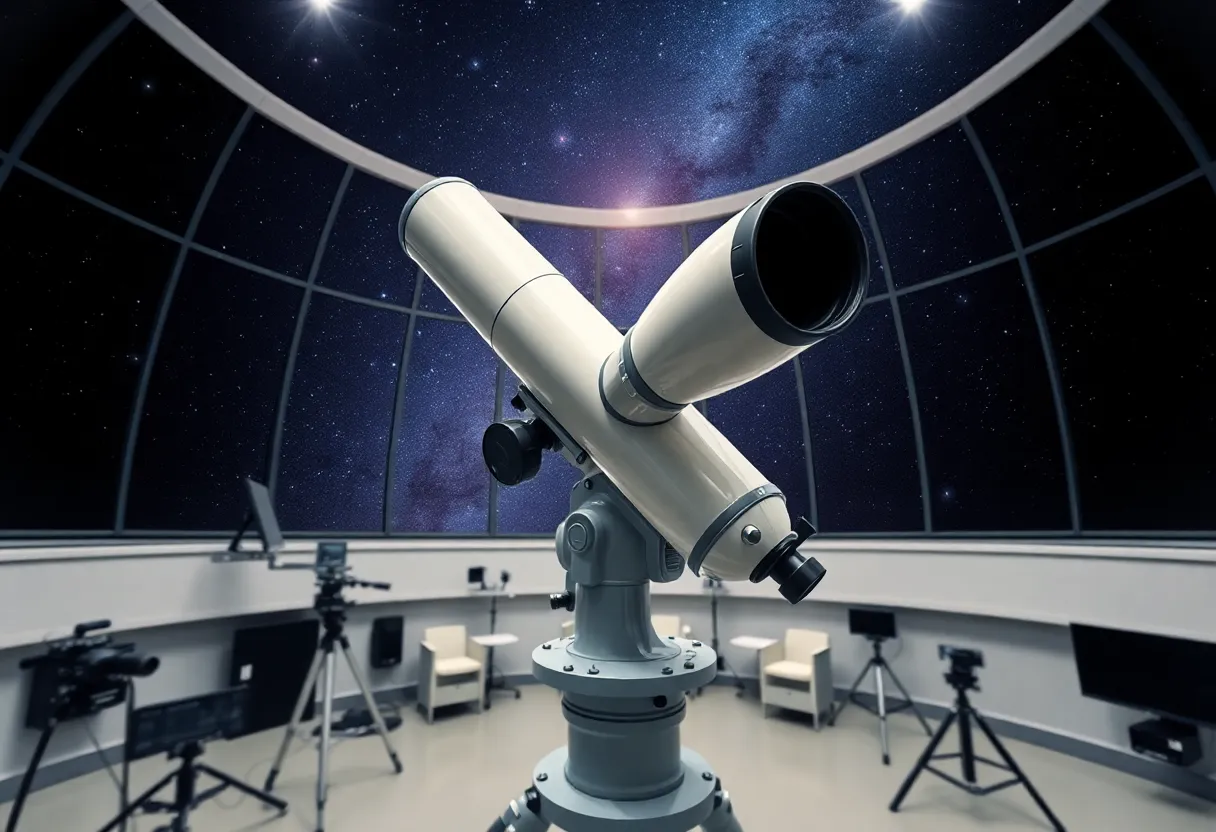Tucson, AZ, October 27, 2025
The University of Arizona’s optics department has secured a $15 million grant from NASA to enhance telescope technology development. The funding will improve space imaging tools and create 40 new research positions, boosting local economic growth and innovation in Tucson. This project aims to enhance high-resolution imaging and supports NASA’s planetary exploration objectives. Tucson’s established STEM workforce positions it as a significant hub for aerospace advancements, emphasizing collaborative efforts between academia and industry.
University of Arizona’s Optics Department Secures $15 Million NASA Grant for Telescope Technology
Tucson, AZ – The University of Arizona’s optics department has obtained a $15 million grant from NASA to advance telescope technology development. Announced today, the funding supports enhancements in space imaging tools, marking a significant boost for astronomical research in the region.
The project focuses on improving the precision and capabilities of telescopes used for space observation. This initiative aims to refine imaging technologies that capture detailed views of distant celestial bodies, benefiting future space missions and scientific discoveries. The grant will directly create 40 new research positions, expanding the local workforce in advanced optics and aerospace fields.
Key aspects of the project include the development of next-generation optical systems. These systems are designed to address challenges in high-resolution imaging, such as reducing distortions and increasing light sensitivity. By integrating cutting-edge materials and software algorithms, the technology will support NASA’s broader goals in planetary exploration and deep-space astronomy.
Impact on Local Economy and Innovation
The funding positions Tucson as a growing center for aerospace innovation. With its established STEM workforce, the city is well-equipped to host such projects. The influx of research roles is expected to stimulate economic growth, attracting talent and fostering collaborations between academia and industry.
Research positions will cover areas like optical engineering, data analysis, and prototype testing. This expansion not only builds on the university’s expertise but also aligns with regional strengths in technology and manufacturing. Local businesses may see opportunities in supplying components, further integrating the project into Tucson’s economy.
Broader Context of the Project
NASA’s investment reflects ongoing priorities in space science, where advanced imaging is crucial for missions like those to Mars or exoplanet studies. The University of Arizona has a long history in optics, contributing to instruments on major telescopes worldwide. This grant builds on that legacy, ensuring continued leadership in the field.
The development process will involve multiple phases, starting with design and simulation, followed by laboratory testing. Successful outcomes could lead to applications in both ground-based and space-based observatories. This work supports the global push for better understanding of the universe, from mapping galaxies to detecting potential life signs on other planets.
In recent years, similar grants have spurred innovations that improve satellite imagery and astronomical data collection. Tucson’s proximity to observatories like Kitt Peak enhances the project’s potential, providing real-world testing grounds. The initiative also emphasizes sustainable practices, aiming to make telescope technologies more energy-efficient.
Details on the Research Positions
The 40 positions include roles for graduate students, postdoctoral researchers, and senior engineers. Training programs will equip participants with skills in laser optics and adaptive imaging systems. This comprehensive approach ensures the project not only advances technology but also develops the next generation of scientists.
Collaboration with NASA experts will occur through workshops and joint reviews, accelerating progress. The grant covers equipment purchases, software development, and facility upgrades at the university’s optics labs. Overall, this funding underscores the importance of public investment in basic research for long-term technological gains.
Significance for Space Exploration
Enhanced space imaging tools from this project could revolutionize how data is gathered from space. Improved resolution means clearer images of cosmic events, aiding in the study of black holes, nebulae, and more. For Tucson, it reinforces the city’s role in national space efforts, complementing other local aerospace activities.
The announcement comes amid increased federal support for STEM initiatives. This grant is part of a larger portfolio aimed at maintaining U.S. competitiveness in space technology. As the project unfolds, updates on milestones will likely highlight its contributions to both science and the local community.
In summary, the $15 million NASA grant to the University of Arizona’s optics department drives forward telescope tech development, creates vital research jobs, and solidifies Tucson’s status in aerospace. This development promises to yield tools that expand humanity’s view of the cosmos while benefiting the regional economy.
FAQ
- What is the amount of the NASA grant awarded to the University of Arizona’s optics department?
- The University of Arizona’s optics department has obtained a $15 million grant from NASA.
- What is the primary focus of the project funded by this grant?
- The project focuses on improving the precision and capabilities of telescopes used for space observation, supporting enhancements in space imaging tools.
- How many research positions will the grant create?
- The grant will directly create 40 new research positions.
- How does this project position Tucson?
- The funding positions Tucson as a growing center for aerospace innovation, aligning with the city’s strong STEM workforce.
- What are some key aspects of the telescope technology development?
- Key aspects include the development of next-generation optical systems designed to address challenges in high-resolution imaging, such as reducing distortions and increasing light sensitivity.
Key Features Chart
| Feature | Description |
|---|---|
| Grant Amount | $15 million from NASA |
| Project Focus | Enhancements in space imaging tools and telescope technology |
| Research Positions | 40 new positions in optics and aerospace |
| Location Impact | Positions Tucson as a hub for aerospace innovation |
| Technology Goals | Improved high-resolution imaging, reduced distortions, increased light sensitivity |




